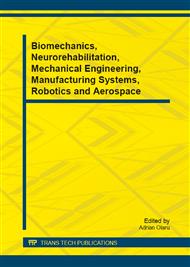p.267
p.277
p.283
p.289
p.297
p.303
p.310
p.316
p.323
Airfoils Aerodynamic Performance Analysis in Heavy Rain
Abstract:
Heavy rainfall greatly affects the aerodynamic performance of the aircraft. There are many accidents of aircraft caused by aerodynamic efficiency degradation due to heavy rain. In this paper we have studied the heavy rain effects on the aerodynamic efficiency of NACA 64210 and NACA 0012 airfoils with cruise and landing configuration. For our analysis, CFD method and preprocessing grid generator are used as our main analytical tools, and the simulation of rain is accomplished via two phase flow approach named as Discrete Phase Model (DPM). Raindrops are assumed to be non-interacting, non-deforming, non evaporating and non spinning spheres. Both cruise and landing configurations of airfoils exhibited significant reduction in lift and increase in drag for a given lift condition in simulated rain. Our results are in good agreement with the experimental results. It is expected that the quantitative information gained in this paper will be useful to the operational airline industry and greater effort such as small scale and full scale flight tests should put in this direction to further improve aviation safety.
Info:
Periodical:
Pages:
297-302
Citation:
Online since:
December 2012
Authors:
Keywords:
Price:
Сopyright:
© 2013 Trans Tech Publications Ltd. All Rights Reserved
Share:
Citation:


